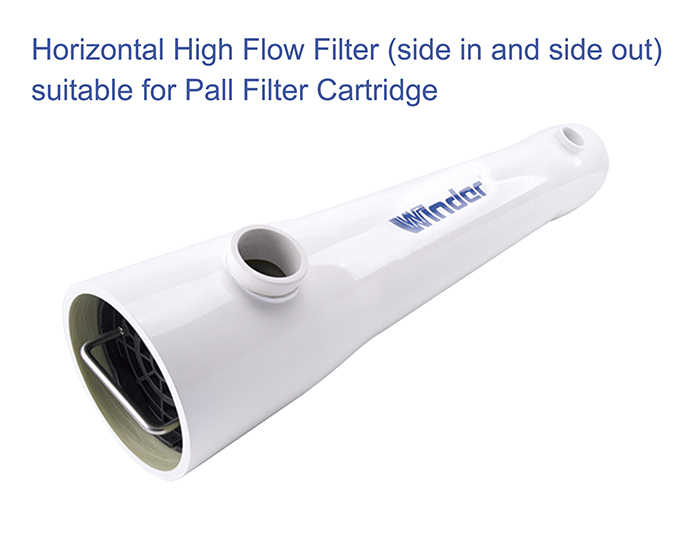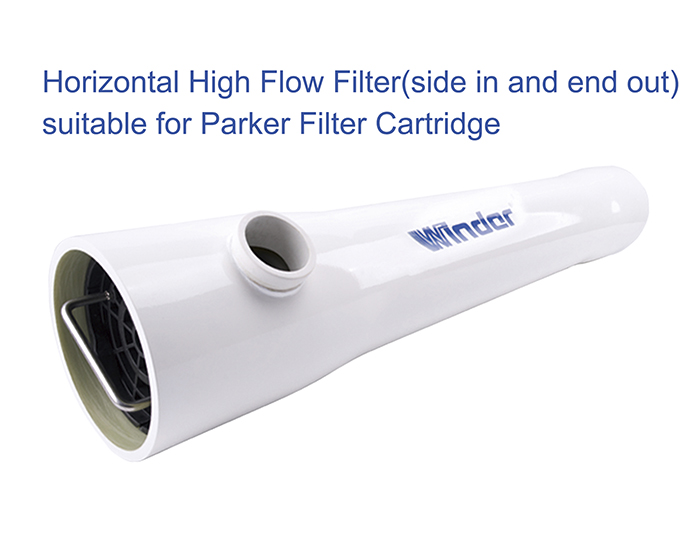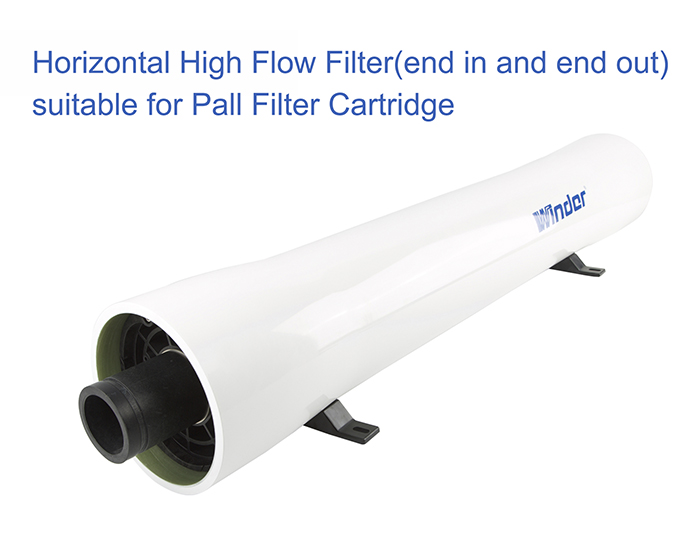The main difference between UPVC filters and FRP filters lies in material and characteristics.
In terms of material, UPVC filters are usually made of UPVC material, while FRP filters are made of glass fiber reinforced plastic. Both materials have the characteristics of corrosion resistance, durability, and easy maintenance, but FRP filters have higher corrosion resistance and stronger durability due to their special material, making them suitable for use in harsh environments.
In terms of characteristics, UPVC filters usually have the advantages of lightweight, easy installation, and lower cost. However, FRP filters, due to the characteristics of their material, have better high-temperature and high-pressure resistance, making them suitable for handling high-temperature and high-pressure fluids. In addition, FRP filters usually have better visual aesthetics and neatness, with an upper water inlet design and 4" coupling for inlet and outlet pipe connections, making installation and maintenance more convenient.
In summary, UPVC filters and FRP filters have their respective advantages. UPVC filters, due to their lightweight, low cost, and easy installation, are suitable for fluid treatment in general environments. PVC (Polyvinyl Chloride)
Basic Characteristics: PVC is one of the world's most widely produced plastic products, with low cost and wide range of applications. PVC resin is white or light yellow powder. Different additives can be added according to different uses. PVC plastic can show different physical and mechanical properties. By adding suitable plasticizers to PVC resin, various hard and soft transparent products can be made. Hard PVC has good tensile, bending, compressive and impact resistance, which can be used as structural materials alone. Soft PVC has increased elongation at break and cold resistance, but lower toughness, hardness and tensile strength. The density of pure PVC is 1.4 g/cm3, PVC has good electrical insulation performance and can be used as low-frequency insulating materials. Its chemical stability is also good. However, due to PVC's poor thermal stability, long-term heating will result in decomposition, releasing HCL gas, causing PVC to discolor, thus limiting its application range. The use temperature is generally between -15°C and 55°C.
Main Uses: PVC is synthesized by combining ethylene gas and hydrogen chloride, then polymerized. It has high mechanical strength and good corrosion resistance. Due to its high chemical stability, it can be used to manufacture anti-corrosion pipes, fittings, oil pipes, centrifugal pumps and blowers. PVC hard board is widely used in the chemical industry to make the inner lining of self-owned storage tanks, building corrugated sheets, window and door structures, wall decorations, etc. building materials due to its excellent electrical insulation performance. It can be used in the electronics and electrical industry to manufacture plugs, sockets, switches and cables. In daily life, PVC is used to make sandals, toys and artificial leather. When the amount of plasticizer added is 30%-40%, soft PVC is obtained, with high elongation rate, soft products, good corrosion resistance and electrical insulation, and are commonly used as films for industrial packaging, agricultural education, and daily raincoats, insulation layers, etc.

The difference between PVC and UPVC lies in the fact that UPVC is unplasticized, with higher strength.
FRP (Fiber Reinforced Plastics)
FRP (Fiber Reinforced Plastics) is a fiber-reinforced plastic, generally referring to unsaturated polyester, epoxy resin, and phenolic resin matrices reinforced with glass fibers, commonly known as glass fiber reinforced plastic.

Glass fiber reinforced plastic has the following characteristics:
1. Lightweight and durable
The relative density is between 1.5 and 2.0, only 1/4 to 1/5 of carbon steel, but the tensile strength is close to or even exceeds that of carbon steel, and the specific strength can be compared with high-grade alloys. Therefore, it has excellent effects in applications where weight needs to be reduced, such as aviation, rockets, spacecraft, high-pressure containers, etc. The tensile, bending, and compressive strength of some epoxy glass fiber can be over 400 MPa. Note: Specific strength is the strength divided by density.
2. Good corrosion resistance
Glass fiber reinforced plastics are good corrosion-resistant materials, with good resistance to atmospheric, water, and various concentrations of acid, alkali, salt, and oil and solvents. They have been applied in various aspects of chemical corrosion protection and are replacing carbon steel, stainless steel, wood, and non-ferrous metals.
3. Good electrical properties
Glass fiber reinforced plastics are excellent insulating materials and are used to make insulators. They have good dielectric properties at high frequencies. They have good microwave transmission properties and are widely used in antenna covers.
4. Good thermal properties
FRP has a low thermal conductivity, typically 1.25-1.67 kJ/(m•h•K) at ambient temperatures, which is only 1/100-1/1000 of metals and is a good insulating material. In sudden transient high-temperature conditions, it is an ideal material for thermal protection and anti-erosion. It can protect spacecraft from the effects of high-speed airflow above 2000°C.
5. Good design
① It can flexibly design various structural products according to needs to meet usage requirements, making the products have good overall performance. 2. Materials can be fully selected to meet the product performance requirements, such as: corrosion resistance, high temperature resistance, high strength in a certain direction, good dielectric properties, etc.
6. Craftsmanship is exquisite
① The molding process can be flexibly selected according to the shape, technical requirements, use, and quantity of the product.
② The process is simple, and the product is formed in one step, with outstanding economic benefits. Especially for products with complex shapes and small quantities, the process advantage is more prominent.
